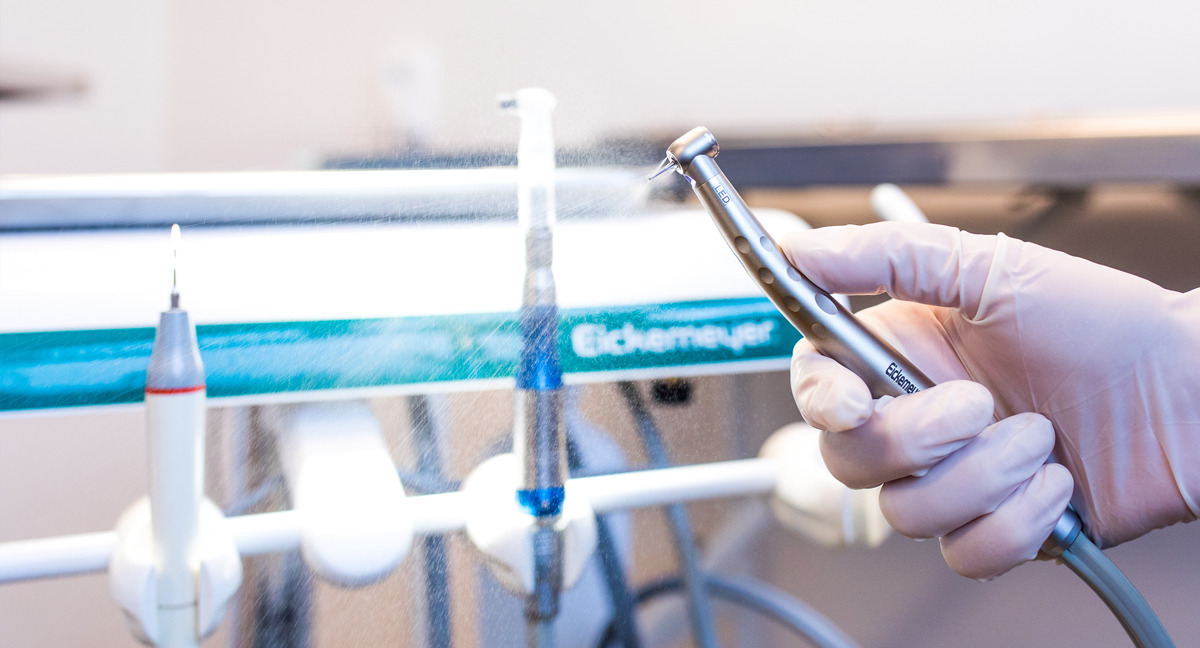Does your pet need dental treatment? Our veterinarians and assistants are here to help. Below, you can read more about how a dental treatment is carried out.
STEP 1 – Visitation
If you have scheduled a dental treatment for your pet with us, it is important that your pet arrives at the clinic on an empty stomach. This means you should withhold food for 12 hours prior to the dental procedure, but water is allowed.
At the clinic, we will prepare an intake form for your pet. We will ask you a few questions, including your pet’s weight, the last time they received medication, and we will verify your contact details. We will then provide an estimate of when we expect the dental treatment to be completed. You can call us at this time to receive an update on how the procedure went and when we anticipate your pet will be awake enough to go home.
STEP 2 – Anesthesia
Anesthesia can be a concern for many pet owners and is often a reason to avoid dental treatment. While anesthesia always carries some risk, we handle it with great care at our clinic. Before administering anesthesia, we perform a thorough physical examination and review your pet’s medical history. We adjust the anesthesia based on your pet’s age, weight, breed, and condition, allowing even older pets with dental issues to be treated safely and effectively.
The anesthesia is given via an injection into the muscle (typically the thigh), after which your pet will fall asleep within 5-10 minutes. You can stay in the waiting room with your pet until he/she falls asleep. Once your pet is asleep, the assistants will move them to the dental table, and you can go home.
STEP 3 – Preparation for the procedure
Once on the dental table, your pet will first be intubated. This involves placing a tube (silicone tube) into the trachea to ensure proper breathing and to prevent any water from entering the lungs during the dental cleaning. Your pet will be kept warm using a heating pad, a warm jug, and blankets.
STEP 4 – Dental cleaning
First, the teeth are rinsed with a disinfectant solution to reduce the number of bacteria in the mouth (disinfection). Large chunks of tartar are removed with forceps, and the rest is cleaned with an ultrasonic scaler. The high-frequency vibrations of the scaler clean the teeth.
Once all tartar and plaque have been removed, we inspect the teeth for pockets, receding gums with exposed tooth roots, loose and/or broken teeth, enamel defects, etc. Based on this inspection, we determine if any teeth need to be extracted and which ones those are.
STAP 5 – Extraction of teeth
If any teeth need to be extracted, this is the next step. Dogs and cats have longer and thinner roots than humans. Therefore, extractions must be performed with great patience and precision to avoid leaving root fragments, and this process can take considerable time. After the extractions, the socket is flushed with a disinfectant solution, and if necessary, the gums are sutured to promote faster healing and reduce pain. These sutures will dissolve on their own.
STEP 6 – Polishing
At the end of each dental treatment, we polish the teeth with a polishing paste. Polishing smooths out the roughened enamel, making it less likely for plaque to adhere, which helps to delay the formation of plaque and tartar.
Aftercare
After the procedure, your pet will be placed in our recovery area to wake up under the supervision of an assistant. Your pet can be picked up at the agreed time, typically late in the afternoon. If any teeth were extracted, you will receive pain medication and/or antibiotics to take home.
Note: Additional information about aftercare will be sent to you via email before or during your pet’s dental treatment.
Costs
The cost of a dental treatment can vary significantly depending on the procedures required. A ‘simple’ dental cleaning (<30 minutes), which involves removing tartar and carefully polishing the teeth, typically costs between €200 and €300. If the treatment is more extensive (30-60 minutes), for example, if extractions are needed, the costs will increase to between €300 and €500. If your pet’s dental condition requires even more attention, such as for gum inflammation or severely damaged and/or loose teeth, the cost of the treatment (>60 minutes) can range from €500 to €750.
Please ask the veterinarian for a cost estimate before the dental treatment. If we discover during the procedure that additional teeth need to be extracted beyond what was initially estimated, we will always call you for consultation. Therefore, it is very important to remain reachable by phone during your pet’s treatment!
